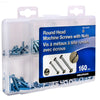If you're faced with the task of repairing an appliance, one of the critical decisions you'll make is whether to use Original Equipment Manufacturer (OEM) parts or aftermarket alternatives. This decision can have long-term implications on the appliance's performance, longevity, and your budget. Let's dive into the comparative analysis of OEM vs aftermarket appliance parts to help you make an informed choice.
Understanding OEM Parts
OEM parts are components made by the original manufacturer of the appliance. These parts are specifically designed to work seamlessly with the corresponding appliance model. The benefits of using OEM parts include:
-
Quality Assurance: Since OEM parts are made by the manufacturer, there is a confidence in the quality and compatibility.
-
Warranty Protection: Appliances often require OEM parts for the warranty to remain intact.
-
Perfect Fit: OEM parts eliminate any concerns about fitment issues since they are replicas of the original components.
For instance, the W11577100 Refrigerator User Interface Control Board is an OEM part that ensures reliable performance in compatible refrigerators.
Exploring Aftermarket Parts
Aftermarket parts are produced by third-party manufacturers and often serve as a cost-effective alternative to OEM parts. Here are some reasons you might consider aftermarket parts:
-
Cost-Effectiveness: Typically, aftermarket parts are less expensive than OEM parts, which can be a significant factor for budget-conscious consumers.
-
Wide Availability: They are widely available and can sometimes offer innovative solutions that OEM parts do not.
-
Variety: Aftermarket parts offer a wider range of options, enabling customization and enhancement based on user needs.
A good example is the DG47-00060A Range Surface Burner (replaces DG47-00023A), which is an aftermarket part that can serve as a replacement burner for certain range models.
OEM vs Aftermarket: Which Should You Choose?
The choice between OEM and aftermarket parts should be influenced by several considerations:
-
Warranty: If your appliance is still under warranty and requires specific parts, OEM may be necessary.
-
Budget: For out-of-warranty appliances, aftermarket parts may offer the necessary balance between performance and budget.
-
Repair Complexity: For complex repairs, OEM parts might be necessary for precision and performance.
In scenarios where you need a critical replacement, like an ABF72989802 Oven Burner Assembly, you might weigh the cost-saving advantages of aftermarket parts against the peace of mind offered by OEM components.
Final Thoughts
Both OEM and aftermarket parts have their places in appliance repair. The choice will largely depend on your specific situation, budget, and repair complexity. Whatever your choice might be, it's crucial to purchase from reputable suppliers to ensure you're getting high-quality parts. Visit xpartsupply.com for a range of appliance parts, whether you're opting for OEM or exploring your aftermarket options.
By considering the pros and cons of each option detailed above, you can make an informed decision that aligns with your repair needs and ensures your appliance continues to run smoothly.







